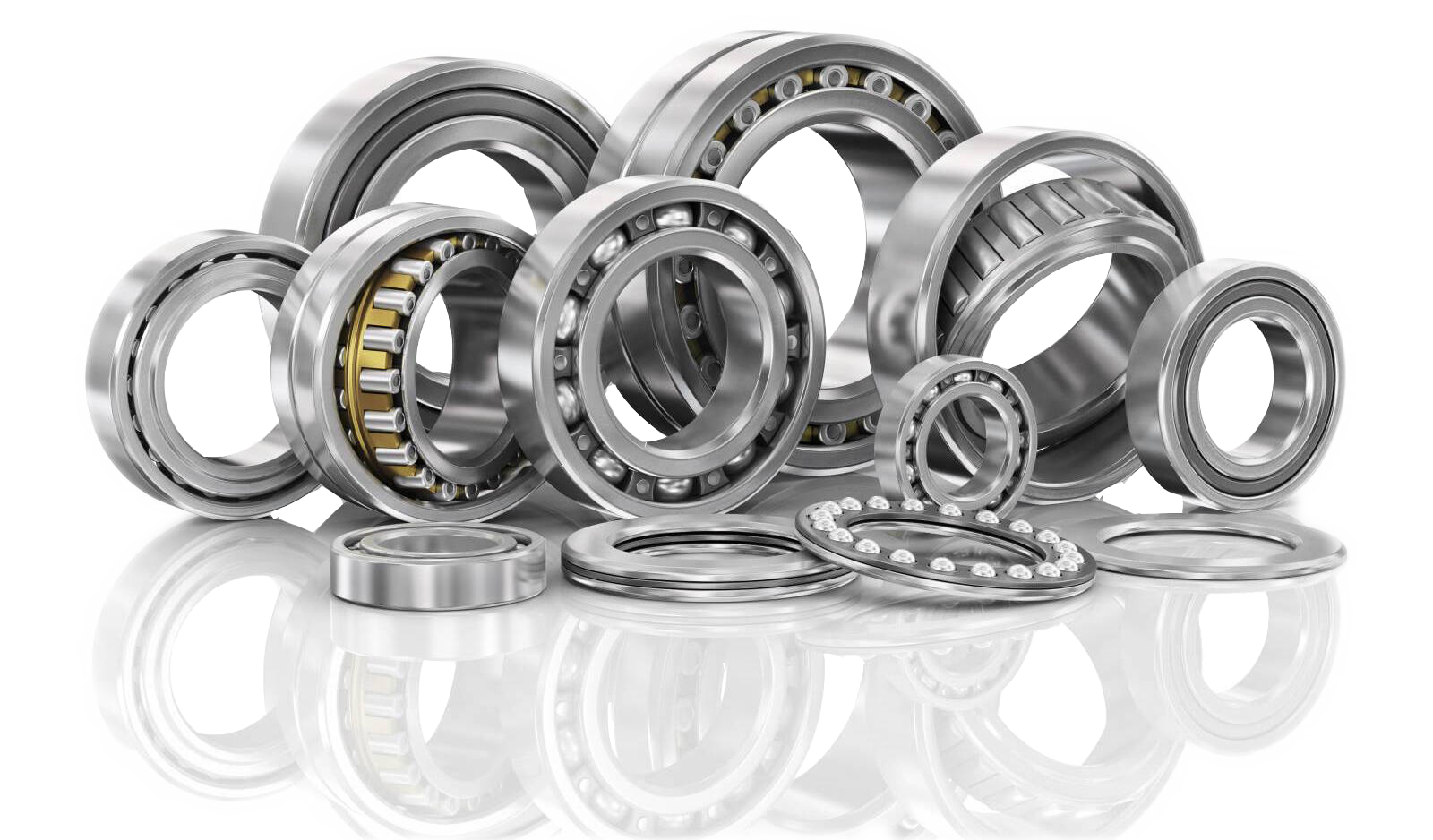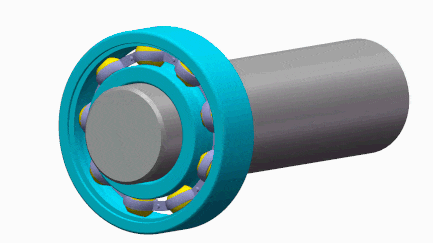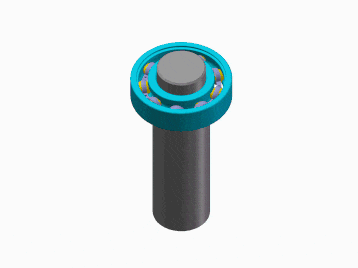Understanding Bearing Loads
To estimate a bearing's lifespan and performance, understanding the application bearing load is crucial. Inadequate bearing load capacity can cause premature wear, overheating, and catastrophic failure. Therefore, it is crucial to consider bearing loads while designing new applications, modifying existing ones, and especially after a bearing failure or malfunction.

What is a Bearing Load?
A bearing load is the amount of force or pressure exerted on a bearing. In detail, the force is transmitted from one bearing ring, through some or all rolling elements, to the other bearing ring. Typically, application loads are transferred to the shaft, then to the bearing's inner ring, and finally to the outer ring.
A bearing can withstand various loads such as Radial Load, Axial Load, Centrifugal Loads, etc.
The magnitude and direction of bearing loads depend on various factors, including equipment weight, operating speed, acceleration, deceleration, shock, vibration, temperature, and lubrication. Improper alignment, installation, or maintenance can also affect bearing loads.
Bearing Radial Load
Radial bearing loads are perpendicular to the shaft's axis and act on the bearing's outer ring. They are caused by the weight of the equipment or the force of rotating components.
To calculate radial load capacity, determine the weight of the components being supported and the forces acting on them, divide the load among the bearings, and ensure that the calculated load is within the maximum load capacity of the selected bearing using manufacturer specifications.
Typical radial loads consist of the weight of a horizontal shaft assembly, gears, pulleys, and cutting tools, etc. If your application requires a radial load on the bearing, a radial ball bearing or an angular contact bearing with a low contact angle would be an excellent choice.

bearing radial load
Bearing Axial Load
Axial loads, also known as thrust loads, are parallel to the shaft's axis and act on the bearing's inner or outer ring. They are caused by thrust or tension forces and can be unidirectional or bidirectional.
They transfer force uniformly to create balanced load distribution. An angular contact bearing with a higher contact angle of around 25° is a good choice for applications with axial loads. However, for offset axial loads, a moment force is applied to the inner race, resulting in non-uniform load distribution on the bearing's rolling elements.
To calculate axial load capacity, consider bearing size, material, and geometry, as well as load direction and magnitude. Manufacturers rate bearings based on standardized formulas and testing.
Applications with high axial loads include pumps, automotive transmissions, and compressors.

bearing axial load
The Impact of Bearing Loads on Machinery
Choosing the right bearing with enough load capacity is crucial for efficient operation and durability of machinery. Too little capacity can cause early failure, downtime, repairs, and safety risks, while excessive loads can lead to overheating, wear, and increased energy usage. Incorrect capacity can cause catastrophic failure, safety hazards, and costly downtime. Consult with experts or bearing manufacturers to ensure proper capacity for your application.
Calculating Bearing Loads
Bearing load capacity can be calculated using various formulas and software programs, including bearing manufacturers' catalogues, online calculators, and finite element analysis (FEA) simulations. The most commonly used formulas for radial and axial loads are:
Radial Load Capacity = (C/P)^(1/3) x Fr
Axial Load Capacity = (C0/P)^(1/2) x Fa
where C is the basic dynamic load rating, P is the equivalent dynamic bearing load, C0 is the basic static load rating, Fr is the radial load, and Fa is the axial load.
For accurate results when calculating bearing load capacity, seek expert advice or use software programs offered by bearing manufacturers.
Select a Bearing That Supports Your Centrifugal Loads
Selecting bearings with sufficient centrifugal load capacity is critical for high-speed applications to prevent premature failure. Centrifugal loads can cause bearing deflection, vibration, and fatigue.
To calculate centrifugal load capacity, use formulas and software programs such as manufacturers' catalogues, online calculators, and FEA simulations. The most common formula is: Centrifugal Load Capacity = (C0/P) x V^2 x 10^-9.
where C0 is the basic static load rating, P is the equivalent dynamic bearing load, V is the bearing speed in rpm.
Bearing Centrifugal Loads
Centrifugal bearing loads result from the rotational speed of an application, particularly high-speed ones like turbines and centrifuges. As the inner ring rotates the rolling elements, they want to move tangentially in a straight path, but the outer ring must force them to follow the circular arc of the bearing. This interaction produces a centrifugal radial load.
The maximum speed of an application can sometimes be limited by the powerful centrifugal load it generates.
Choosing the Right Bearing for the Job
Consider application requirements, load type, speed, environment, and temperature when selecting a bearing. Ball bearings work for low to moderate loads, while roller bearings handle higher loads. Plain bearings suit low-speed, high-load machinery. Maintain bearings with regular inspection, cleaning, and lubrication to ensure optimal performance and longevity.
Conclusion
To select the right bearing for an application, understanding bearing loads is crucial. Radial, axial, and centrifugal loads determine the appropriate load capacity. Lily Bearing offers a wide range of bearings for different conditions and applications, with high-quality products and expert advice. Contact us to learn more.
Keep Learning








